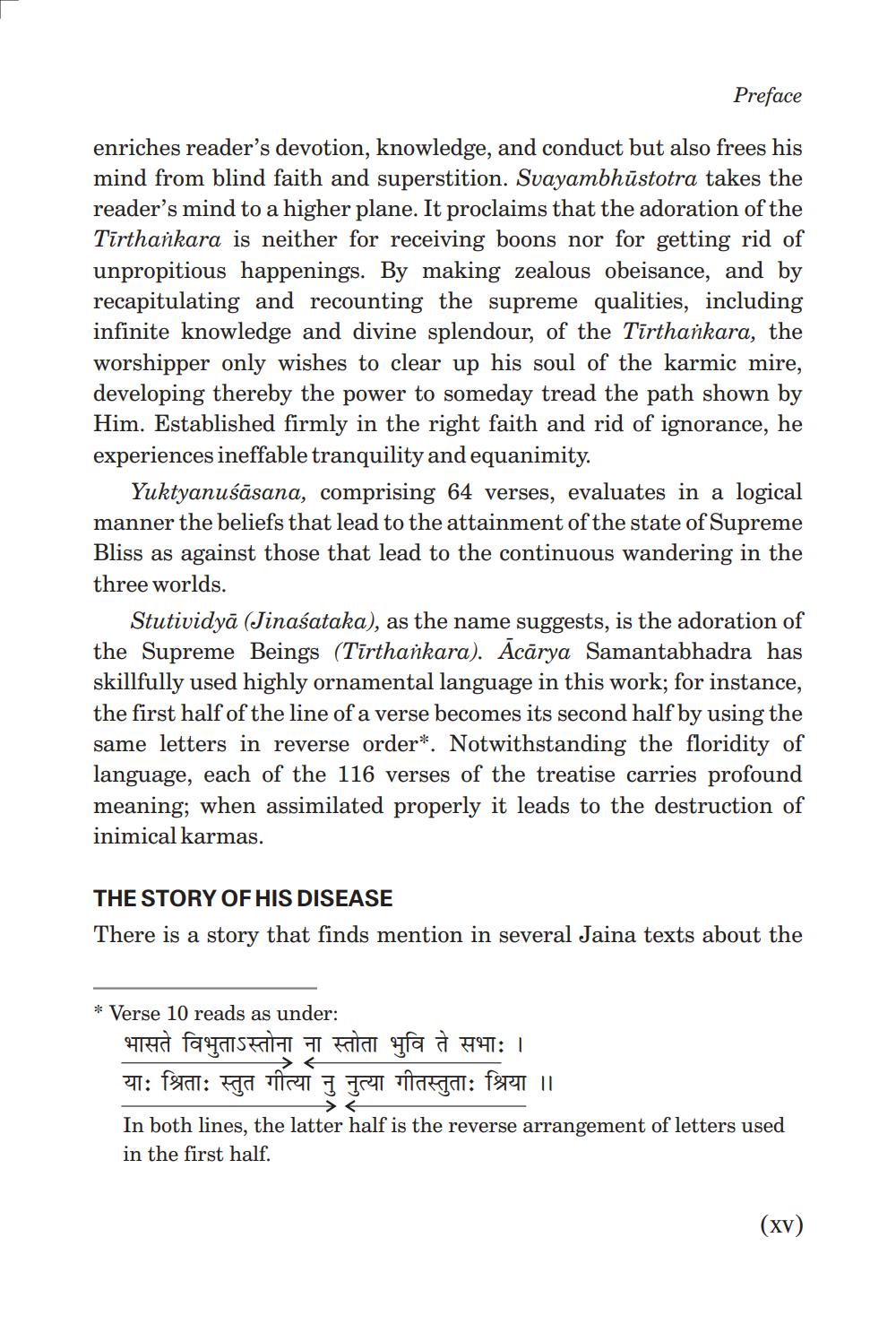________________
Preface
enriches reader's devotion, knowledge, and conduct but also frees his mind from blind faith and superstition. Svayambhūstotra takes the reader's mind to a higher plane. It proclaims that the adoration of the Tīrthankara is neither for receiving boons nor for getting rid of unpropitious happenings. By making zealous obeisance, and by recapitulating and recounting the supreme qualities, including infinite knowledge and divine splendour, of the Tīrthankara, the worshipper only wishes to clear up his soul of the karmic mire, developing thereby the power to someday tread the path shown by Him. Established firmly in the right faith and rid of ignorance, he experiences ineffable tranquility and equanimity.
Yuktyanusāsana, comprising 64 verses, evaluates in a logical manner the beliefs that lead to the attainment of the state of Supreme Bliss as against those that lead to the continuous wandering in the three worlds.
Stutividyā (Jinaśataka), as the name suggests, is the adoration of the Supreme Beings (Tīrthankara). Acārya Samantabhadra has skillfully used highly ornamental language in this work; for instance, the first half of the line of a verse becomes its second half by using the same letters in reverse order*. Notwithstanding the floridity of language, each of the 116 verses of the treatise carries profound meaning; when assimilated properly it leads to the destruction of inimical karmas.
THE STORY OF HIS DISEASE There is a story that finds mention in several Jaina texts about the
* Verse 10 reads as under:
भासते विभुताऽस्तोना ना स्तोता भुवि ते सभाः । 21: ftal: la TGI I TRA ildegal: fraill In both lines, the latter half is the reverse arrangement of letters used in the first half.
(xv)




